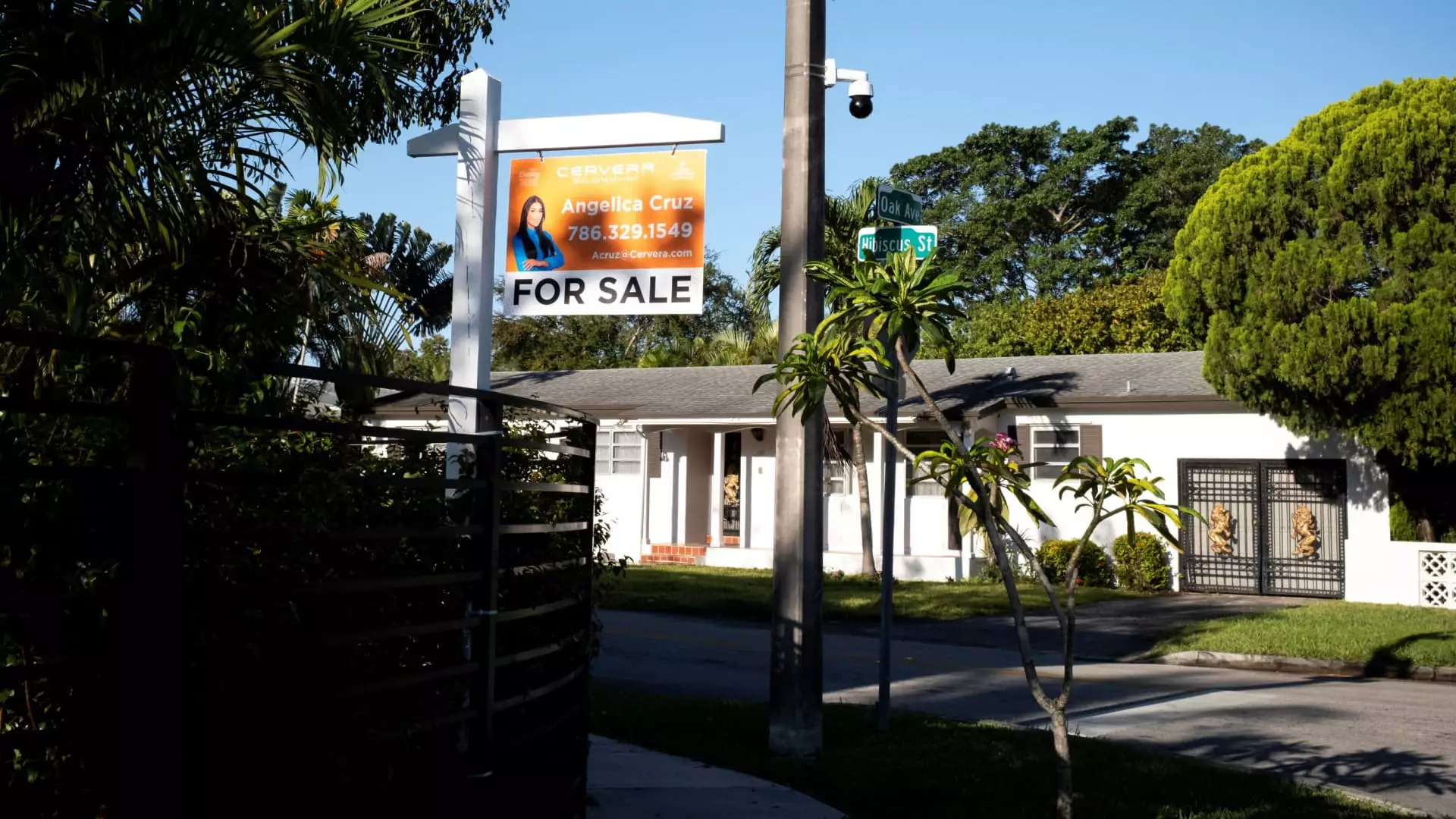As we venture into 2024, the once-bustling housing market faces a sobering reality, particularly evident during the critical spring selling season. With the National Association of Realtors reporting that sales of previously owned homes plummeted by 5.9% in March, we are witnessing the slowest sales pace since the financial crisis of 2009. This figure, revealing a sales volume of only 4.02 million units on a seasonally adjusted annualized basis, sends alarm bells ringing for sellers and buyers alike, who are grappling with an economy that feels increasingly uncertain.
The declines we are seeing are not isolated to a particular region. Nationwide, sales fell across the board, albeit with the West experiencing the steepest drop of over 9%. Interestingly, the Rocky Mountain states have shown resilient job growth, leading to those areas being the exception to an otherwise dismal trend. This disparity underlines a banal truth: neighborhoods once deemed “hot” have turned ice cold, as skyrocketing mortgage rates and economic concerns gnaw away at the foundation of housing activity.
The Mortgage Rate Crisis
At the crux of this market malaise is the rising mortgage interest rates that have crippled potential buyers’ purchasing power. The 30-year fixed mortgage has averaged over 7% for the better part of the early year, offering little respite until recently. The statistics reveal a stark reality: contracts signed in January and February may be reflected in the March closings, but those buyers were already taking the hit from high borrowing costs. When affordability becomes a barrier, it’s not just a decline in numbers we’re witnessing; it’s an erosion of dreams for many families hoping to buy their first home. What we are experiencing is a fundamental disruption in the market’s equilibrium.
Lawrence Yun, the chief economist for NAR, pointed out the dilemma of deteriorating residential mobility—a concept that essentially speaks to society’s overall economic flexibility. With fewer individuals willing or able to move for better opportunities, we find ourselves in a cycle of stagnation that has broader implications than just the housing market. A generation faces a future where accumulating wealth through homeownership is slipping through their fingers.
Inventory and Price Trappings
The irony is that while inventory levels have risen—1.33 million units available by the end of March, a 20% spike from the previous year—sales are still suffering. The healthy 4-month supply of homes reflects a more balanced market, yet it’s clear that a surplus of listings isn’t enough to offset the crippling impact of high mortgage rates. Buyers remain hesitant, caught in the tension between desire and financial capability.
For sellers, this is a double-edged sword. While the median price for homes remains at a historic high of $403,700 for March, the minuscule annual gain of merely 2.7% suggests that even homeowners looking to cash in on their investments may find themselves in a precarious situation. Prices that would normally reflect a robust market are stagnating, signaling a slow erosion of confidence in property values. The stark contrast between rising household wealth tied to real estate and the reality of stagnant sales numbers sets the stage for a potentially unstable future.
The Warning Signs for First-Time Buyers
A particularly troubling statistic is the first-time buyers’ market share, static at 32%—significantly below the historical average of around 40%. This lack of new entrants is not just a number; it’s symptomatic of a housing market that is becoming increasingly exclusive. For many, the dream of homeownership is fading, replaced with an acute awareness of fiscal limitations. The proportion of all-cash sales dipping to 26% further hints at rising caution, a sentiment echoed by economists like Robert Frick who warn of rising contracts being canceled as buyer confidence dwindles.
In response to a volatile stock market, the housing market appears poised for further turbulence. If March has yielded such disappointing results, even harsher realities may lie ahead. As we reflect on this crisis, it’s imperative to recognize that the signs are stark, and the numbers can no longer be ignored. We must confront the uncomfortable truth about the current state of our housing market—one that denies many the foundational opportunity of homeownership, and pushes us toward a future fraught with economic division.

